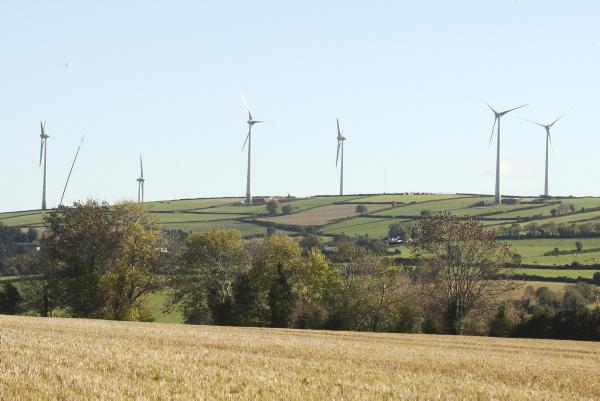The 17th century book The Ingenious Gentleman Don Quixote of La Mancha tells of the supremely fanatical Don Quixote and his trusty sidekick, Sancho.
In the book, the protagonist, while on his journey, comes across giant windmills. Mistaking them for giants, Quixote lowers his lance and charges at one of them. It takes Sancho to show his master that the windmills were not evil, but instead were used for generating food and energy.
So the phrase “tilting at windmills” was born. This means an attempt to defeat something or overcome a problem with little chance of success.
Not much has changed in the 400 years since Quixote. The level of distrust towards windmills and wind energy as a whole continues. The debate continues to rage in Ireland over the necessity of large-scale wind farm developments.
At present, there are 216 wind farms on the island of Ireland, 182 of which are in the Republic. The island generates a total of 2,816 megawatts (MW) which is, at full capacity, able to generate power for some 1.8m homes. Just over 16% of electricity was generated by wind in 2013.
There are plans afoot to build more wind farms. A massive 40 wind-farm project in five counties in the Midlands had been planned by two companies, Mainstream and Element. The goal was to export the power generated to Britain.
However, earlier this year the British government essentially reversed this plan to import electricity generated by wind power in favour of exploring fracking and nuclear power.
The development of the Midlands project is continuing, but on a much smaller scale, with access to the Irish grid the new goal.
So why is Ireland continuing to press ahead with wind farm developments?
Brian Motherway is chief executive of the Sustainable Energy Authority of Ireland (SEAI) and he believes that there is still a real need for developing the renewables sector.
“For Ireland, wind is still one of the best options in terms of renewables. It is a good news story,” Motherway explained.
“We need to displace more of the fossil fuel which we use; it’s expensive and not particularly clean. There is very clear evidence that wind is very good for giving us more control of our energy needs. We need to, and we are becoming more aware of the need for renewables. That doesn’t mean that we can build wind farms everywhere. There are some places that are just not suited to wind farm development,” Motherway said.
The IFA has criticised the Irish Government for allowing a “developer-led” approach to wind farms.
James Murphy is head of IFA’s renewable strategy.
“The Government has allowed wind farm developers roll into a community like the oil well diggers of the wild west. They come in promising money for everyone, but in reality their actions have driven wedges between neighbours and even individual families,” he said.
“The Government needs to take action and put in place law regarding setback distances, etc, so there can be no wriggle room. If the law says X then there can be no Y. This has been the main problem in the past. People didn’t know what their rights were,” Murphy said.
Motherway rejected this notion, saying that “hard and fast laws are clunky”. He maintains that the current guidelines are “sufficient and practical”.






 This is a subscriber-only article
This is a subscriber-only article










SHARING OPTIONS: